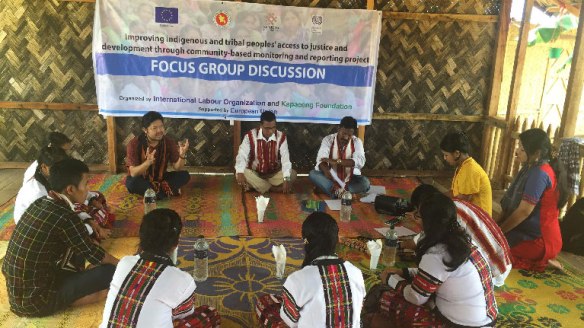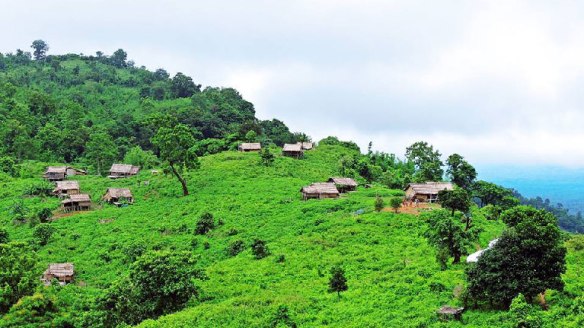
Alexius Chicham (National Project Coordinator)
It took 11 hours to make the 400 kilometre journey from the Bangladeshi capital, Dhaka, to the remote indigenous community of the Bom, who live in the stunning terrain of the Chittagong Hill Tracts.
The moment I reached their village, I was struck by their unique culture and way of life as well as by the challenges they face, a long way from basic services, in an area that lacks even essential infrastructure or decent work opportunities.
The Bom are one of 16 communities I have visited in the last two years, as part of my work on the Indigenous Navigator project. This initiative that provides indigenous communities with the tools and data they need to help monitor the recognition and implementation of their rights. My role has been to raise awareness of indigenous rights in the context of the Sustainable Development Goals (SDGs), the global targets set by the United Nations to achieve a better and more sustainable future for us all. I also help communities improve their ability to gather data (through community consultations) about their own priorities, perceptions and understanding of indigenous rights and sustainable development.
It has been a unique opportunity to explain the SDGs to historically marginalized communities. As well as a way to ensure the voices of indigenous women and men are heard. Prior to our training and guidance most indigenous communities did not know about their rights, entitlements or about the SDGs. By learning about these subjects, and using the data they have collected, communities can gain a better picture of their situation and voice their needs.
This innovative approac lies at the heart of the Indigenous Navigator, which I am implementing in Bangladesh in collaboration with the Kapaeeng Foundation, and the support of the European Union.
The indigenous communities have become very engaged and have gathered a wide range of information on key issues, including participation in public life, fundamental rights and freedoms, and access to land, territories, natural resources, justice, education, health, employment and occupations.
We are also learning from them, for instance about the impact of climate change, which affects the availability of food, natural resources and their agriculture-based livelihoods. Climate change is also putting their traditions and cultures at risk, because traditional knowledge and occupations depend upon access to land and natural resources.
Through the project, indigenous communities have been able to engage with government institutions at many levels, including through workshops organized by the ILO that have brought together Government, workers’ and employers’ representatives.

As a result, the Government has realized that the unique data the indigenous communities have gathered can help bridge policy gaps. The Government is also beginning to understand the need to improve the visibility of indigenous women and men in official data. The Bangladesh Bureau of Statistics is now looking to include 50 indigenous communities in the population census.
Many challenges remain for indigenous peoples in Bangladesh today, but an important process has begun that is connecting the SDGs directly to those most at risk of being left behind. Through the Indigenous Navigator, communities now know the value of decent work, that they have rights and that their voices matter.
Bangladesh has yet to ratify the Indigenous and Tribal Peoples Convention, 1989 (No. 169), which addresses the rights of indigenous communities. However, the role played by indigenous peoples in the achievement of sustainable development is being increasingly recognized. As we celebrate the ILO Centenary and the 30th anniversary of Convention No. 169, we are striving to make sure that indigenous communities are visible and active participants in shaping a sustainable future in Bangladesh.
